A **DIY dartboard surround** protects your walls from stray darts and provides a professional look to your game room, and can be achieved with simple materials and tools. This article covers everything you need to know about building your own dartboard surround, from choosing materials to step-by-step instructions, and tips for customization.
⚠️ Still Using Pen & Paper (or a Chalkboard)?! ⚠️
Step into the future! The Dart Counter App handles all the scoring, suggests checkouts, and tracks your stats automatically. It's easier than you think!
Try the Smart Dart Counter App FREE!Ready for an upgrade? Click above!
Why Build Your Own DIY Dartboard Surround?
Investing in a pre-made dartboard surround can be costly. Opting for a **DIY dartboard surround** offers numerous benefits, including cost savings, customization options, and the satisfaction of creating something yourself. You can tailor the size, color, and materials to perfectly match your existing décor and personal preferences. Moreover, building your own surround allows you to choose durable materials that will last longer than some commercially available options. It’s also a great way to use up scrap wood or other materials you might have lying around.
Beyond aesthetics and cost, a good surround significantly reduces damage to your walls from errant throws. Even experienced players occasionally miss the board, and the surround acts as a crucial buffer.
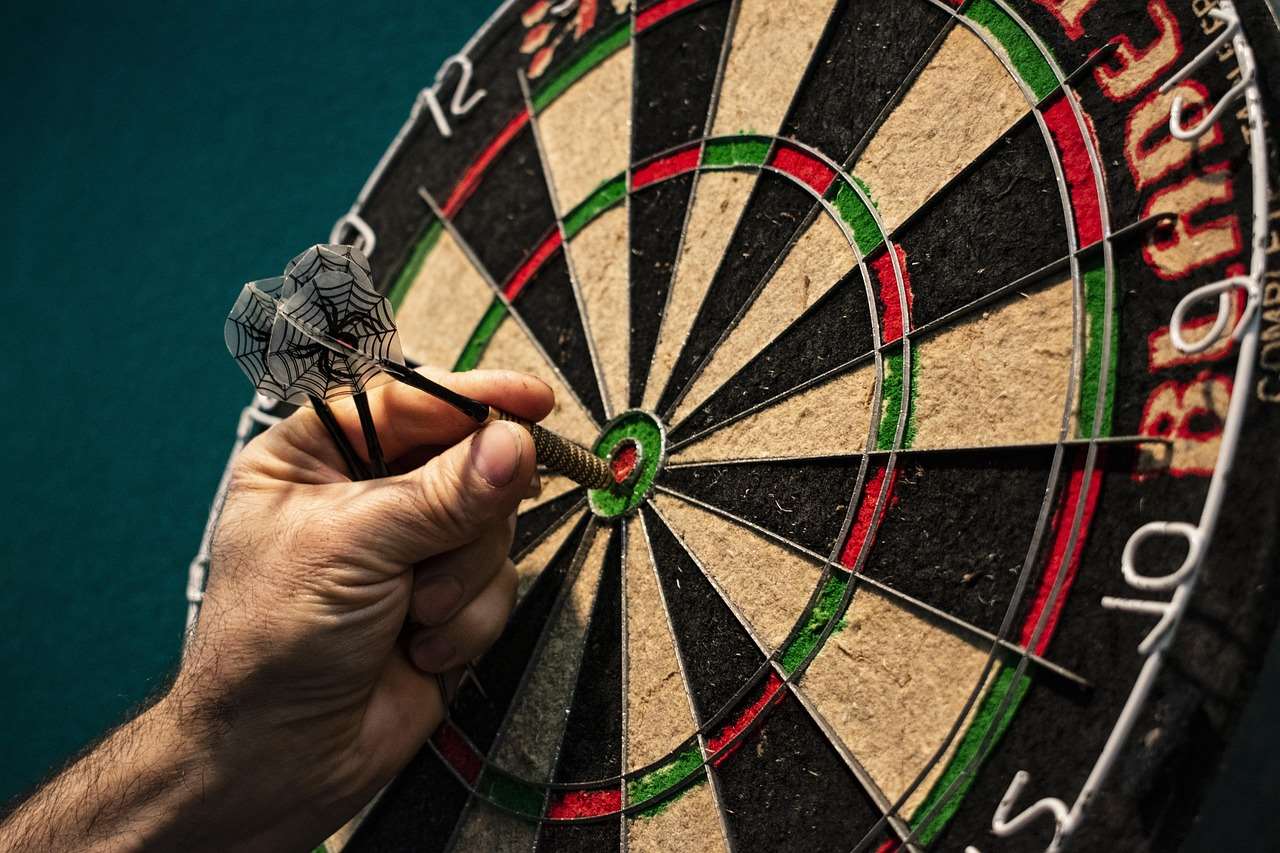
Choosing the Right Materials for Your DIY Dartboard Surround
The materials you choose will largely determine the look, durability, and ease of construction for your **DIY dartboard surround**. Here are some popular options:
- Wood: Plywood, MDF (Medium-Density Fiberboard), and softwood (like pine) are all viable choices. Plywood offers good strength and stability, while MDF provides a smooth, paintable surface. Softwood is easy to work with and relatively inexpensive. Consider the thickness of the wood; ¾ inch is generally a good starting point. You can learn how to Choose Best Dart Equipment here.
- Foam Padding: High-density foam is excellent for absorbing impact and protecting your walls. Look for foam sheets that are at least 1 inch thick. You can often find suitable foam at upholstery shops or online retailers.
- Cork: Cork is another excellent material for a dartboard surround. It’s naturally self-healing, meaning dart holes will close up over time. Cork tiles or sheets are readily available and easy to install.
- Fabric (Optional): If you want to add a decorative touch, consider covering your surround with fabric. Felt, billiard cloth, or even faux leather can create a professional and stylish look.
- Hardware: You’ll need screws, nails, or construction adhesive to assemble your surround. Choose fasteners that are appropriate for the materials you’re using.
Tools You’ll Need
Having the right tools will make the construction process much smoother. Here’s a list of essential tools:
- Measuring Tape: For accurate measurements.
- Saw: A circular saw, jigsaw, or hand saw will work for cutting the wood.
- Drill/Screwdriver: For drilling pilot holes and driving screws.
- Sandpaper: For smoothing rough edges.
- Clamps: To hold pieces together while the adhesive dries.
- Utility Knife: For cutting foam or fabric.
- Level: To ensure your surround is mounted straight.
- Pencil: For marking measurements.
Step-by-Step Guide to Building Your Own Dartboard Surround
Here’s a detailed guide to help you construct your **DIY dartboard surround**:
- Measure and Cut the Wood: Determine the desired size of your surround. A common size is a square that extends approximately 6 inches beyond the dartboard on all sides. Cut the wood into the necessary pieces. For a simple square surround, you’ll need four pieces of wood.
- Assemble the Frame: Join the four pieces of wood to create a square frame. Use screws or nails to secure the corners. Ensure the frame is square by measuring the diagonals – they should be equal.
- Add the Backing (Optional): If you want to add extra protection to your wall, you can attach a piece of plywood or MDF to the back of the frame. This will create a solid surface for the foam or cork to adhere to.
- Attach the Foam or Cork: Cut the foam or cork to fit inside the frame. Use construction adhesive to glue the foam or cork to the backing or directly to the inside of the frame. Apply even pressure and allow the adhesive to dry completely. You can also use spray adhesive, but ensure it’s designed for the materials you’re bonding.
- (Optional) Fabric Covering: Cut the fabric slightly larger than the frame. Wrap the fabric around the frame and secure it to the back using staples or adhesive. Pull the fabric taut to avoid wrinkles.
- Sand and Finish: Sand any rough edges on the wood frame. You can then paint, stain, or varnish the frame to match your décor. Allow the finish to dry completely before mounting the surround.
- Mount the Surround: Carefully center the surround around your dartboard. Use screws or nails to attach the surround to the wall. Make sure it is level and securely mounted. Consider using wall anchors for added stability, especially if mounting on drywall.
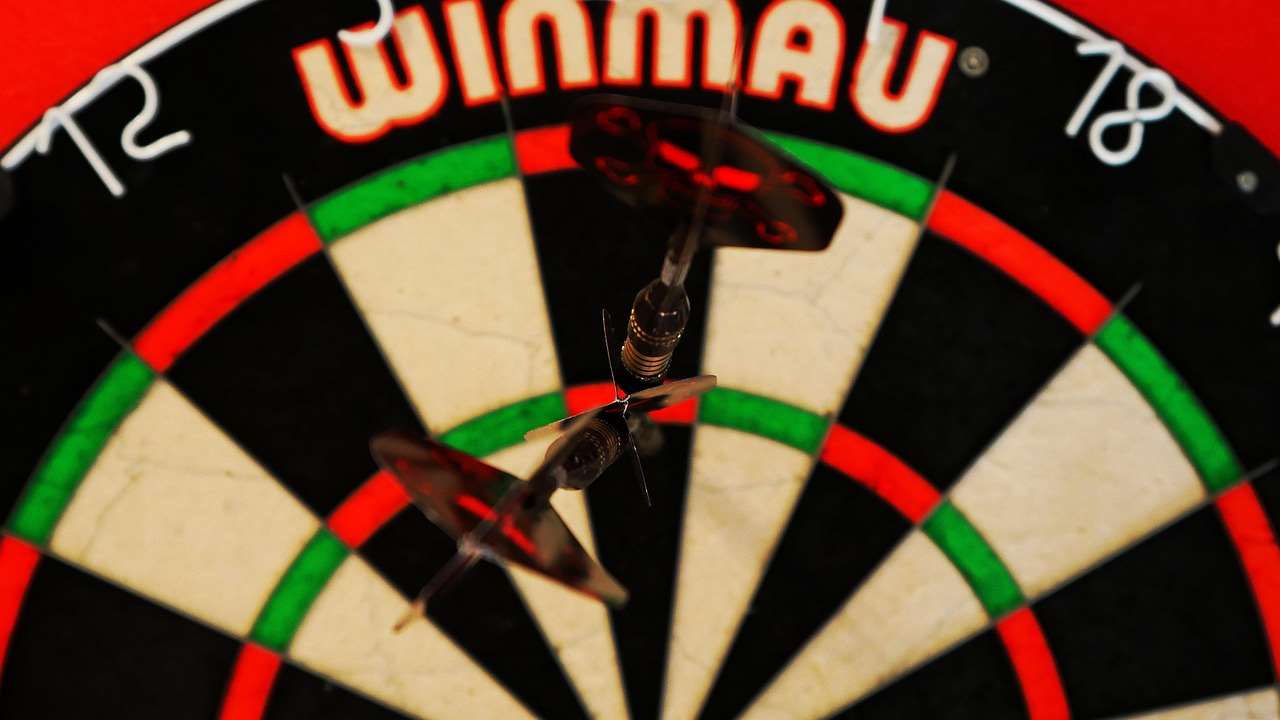
Variations and Customization
There are many ways to customize your **DIY dartboard surround** to suit your style and needs:
- Lighting: Install LED strip lights around the inside edge of the surround to illuminate the dartboard. This can improve visibility and add a professional touch.
- Scoring System: Incorporate a built-in scoring system into your surround. You could use dry-erase markers and a whiteboard or even install a digital scoreboard.
- Personalized Design: Paint a custom design on the frame or cover it with decorative paper. Consider stencils, vinyl decals, or even hand-painted artwork.
- Adding Shelves: Attach small shelves to the surround to hold darts, drinks, or other accessories.
Different Types of Dartboard Surrounds
While this article focuses on a square **DIY dartboard surround**, there are other design options to consider:
- Round Surround: This design mimics the shape of the dartboard and provides a more streamlined look.
- Cabinet Surround: A cabinet surround incorporates doors that can be closed to conceal the dartboard when not in use. This is a good option for multi-purpose rooms.
- Wall-Mounted Surround: A simple, flat surround that is mounted directly to the wall.
Safety Considerations
Safety should always be a top priority when building and using a **DIY dartboard surround**. Ensure the surround is securely mounted to the wall to prevent it from falling. Also, be mindful of the placement of the dartboard and surround to avoid any potential hazards, such as proximity to walkways or furniture. Remeber to Finding Value Budget Dart Sets.
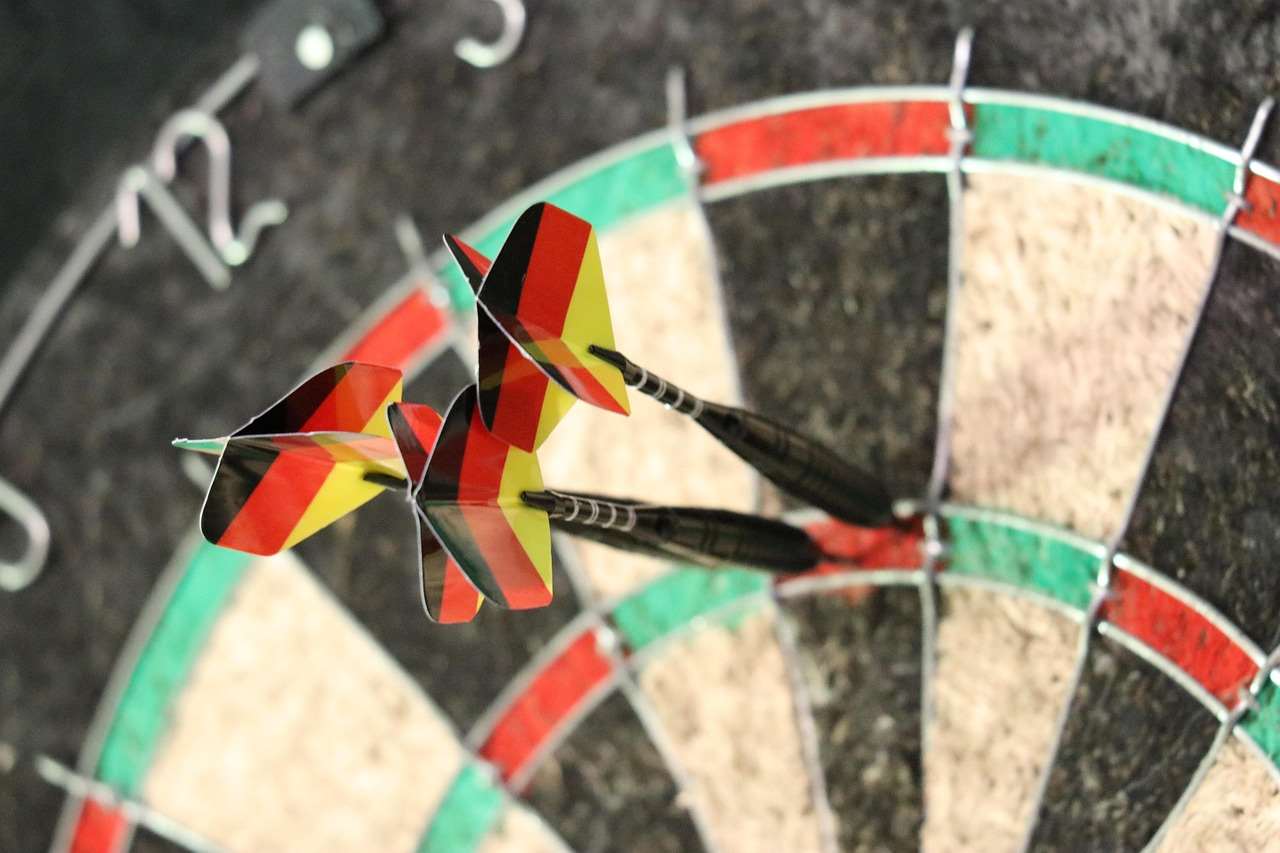
Troubleshooting Common Issues
Here are some common issues you might encounter when building your **DIY dartboard surround** and how to troubleshoot them:
- Frame is not square: Double-check your measurements and use clamps to hold the pieces together while the adhesive dries. If necessary, you can use shims to correct minor imperfections.
- Foam or cork is not sticking: Make sure you are using the correct type of adhesive and that the surfaces are clean and dry. Apply even pressure and allow the adhesive to dry completely.
- Fabric is wrinkling: Pull the fabric taut as you are securing it to the back of the frame. Use a steam iron to remove any remaining wrinkles.
- Surround is not level: Use a level to ensure the surround is mounted straight. Use shims to make minor adjustments.
Tips for a Professional Finish
To achieve a professional finish on your **DIY dartboard surround**, pay attention to the details:
- Use high-quality materials: Investing in better materials will result in a more durable and attractive surround.
- Take your time: Don’t rush the construction process. Take your time to measure accurately, cut cleanly, and assemble carefully.
- Sand thoroughly: Sanding the wood smooth is essential for a professional finish. Use progressively finer grits of sandpaper.
- Apply multiple coats of finish: Applying multiple thin coats of paint, stain, or varnish will result in a smoother and more durable finish.
- Hide the fasteners: Countersink the screws or nails and fill the holes with wood filler. Sand the filler smooth before applying the finish.
Maintaining Your DIY Dartboard Surround
Proper maintenance will help extend the life of your **DIY dartboard surround**. Regularly clean the surround with a damp cloth to remove dust and dirt. If you have a fabric-covered surround, vacuum it regularly to remove dust and debris. Replace the foam or cork padding as needed to maintain its protective properties. Check the mounting hardware periodically to ensure the surround is securely attached to the wall.
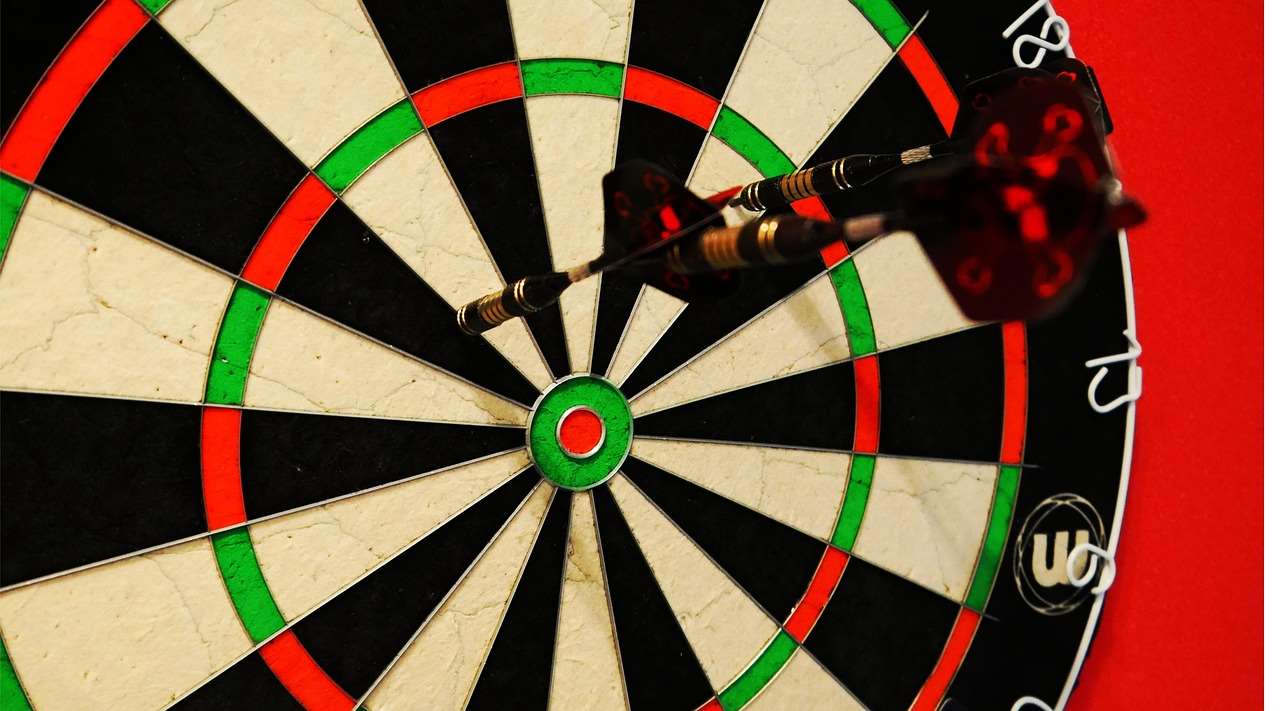
Cost Breakdown of a DIY Project
The cost of a **DIY dartboard surround** can vary depending on the materials you choose and where you purchase them. However, it is typically significantly less expensive than buying a pre-made surround. Here’s a general breakdown of the potential costs:
- Wood: $20-$50
- Foam/Cork: $15-$30
- Fabric (Optional): $10-$20
- Hardware: $5-$10
- Finish (Paint/Stain): $5-$15
Total estimated cost: $55-$125
By comparison, a pre-made dartboard surround can easily cost $100 or more.
The Satisfaction of Building It Yourself
Beyond the cost savings, building your own **DIY dartboard surround** is a rewarding experience. You get the satisfaction of creating something unique and functional with your own hands. Plus, you’ll have a custom-made surround that perfectly complements your game room. Remember to Investing In Premium Dart Equipment.
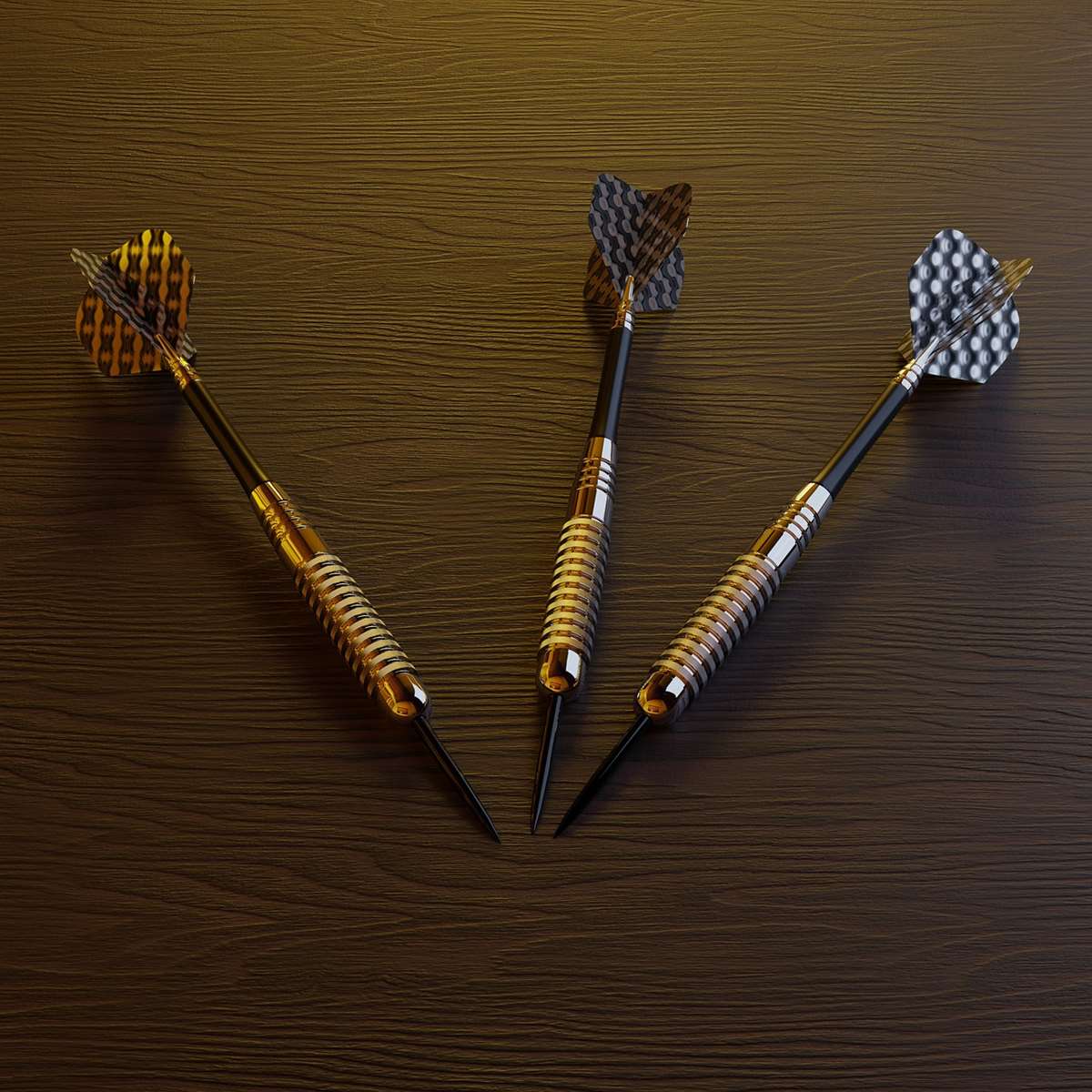
Conclusion
Creating a **DIY dartboard surround** is a worthwhile project that offers cost savings, customization options, and the satisfaction of building something yourself. By following the steps outlined in this article, you can create a professional-looking and functional surround that will protect your walls and enhance your dart-playing experience. Choose your materials wisely, take your time, and enjoy the process! Ready to take your dart game to the next level? Check out our guide on Best Budget Darts For Beginners and start playing today! Also, consider the Are Premium Darts Worth It?
Hi, I’m Dieter, and I created Dartcounter (Dartcounterapp.com). My motivation wasn’t being a darts expert – quite the opposite! When I first started playing, I loved the game but found keeping accurate scores and tracking stats difficult and distracting.
I figured I couldn’t be the only one struggling with this. So, I decided to build a solution: an easy-to-use application that everyone, no matter their experience level, could use to manage scoring effortlessly.
My goal for Dartcounter was simple: let the app handle the numbers – the scoring, the averages, the stats, even checkout suggestions – so players could focus purely on their throw and enjoying the game. It began as a way to solve my own beginner’s problem, and I’m thrilled it has grown into a helpful tool for the wider darts community.